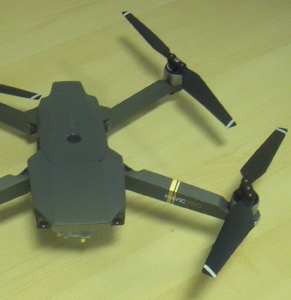The UK Government is consulting on drone use and safety enforcement. Suggestions include a minimum age for drone pilots; 1km restrictions near protected aerodromes (compared with a 400ft height and flying restriction near aerodromes restrictions that comes into force on July 30); operators of small drones of a mass between 250g and 20kg inclusive to have to register; and pilots to meet ‘competence requirements’.
As for misuse of drones, the document describes drones being used to smuggle drugs and mobile phones and other contraband into prisons as the ‘key threat’. It admits that some drone users knowingly flout the law, ‘the Government thinks it likely that the vast majority of drone users breaking the rules are unaware of the law and are doing so unintentionally’. Hence the regulator the Civil Aviation Authority (CAA) ‘Dronecode’ safety awareness campaign, described as ‘a simple set of rules’ to raise awareness of the law with drone users, commercial and recreational. As the document admits, drone users might not carry around with them what the actual rules are.
The Government has also encouraged the use of safety apps, such as ‘Drone Aware’, a smartphone app to highlight where it is unsafe, or illegal, to fly a drone. As part of the consultation, a question is whether the Government should require drone fliers to use such an app, as in the consultation’s words ‘an important precursor to drone traffic management systems’; although the document goes on to admit that there is ‘not yet a clear understanding of what systems and procedures might be required’.
As for ‘counter-drone technology’ to protect sensitive national infrastructure and large events from potential malicious use of drones, the consultation says contraband delivered per flight (an average payload of 1kg) ‘can have a considerable impact on the safety and security of prisons’; and flights over critical and sensitive sites are ‘now not uncommon’, whether done in ignorance or recklessly. Small drones have also been used in neighbourhood disputes to cause harassment. One counter-drone method is via the drone industry, of geo-fencing (software and data in the drone that can restrict it from flying in set areas, such as airports).
As the document says, besides physical measures against drones such as netting or barriers, it’s for the military or police on duty at sensitive sites to detect a drone; assess its security threat; then act.
The document does say: ” However there will often be a requirement for organisations to defer authority to trained security personnel to enable them to make timely decisions on whether a drone poses a security threat. These will include private security managers and commercial guard forces.” As the consultation document acknowledges, a response has to be ‘necessary, proportionate and timely’; which requires training, and a ‘site specific operational policy’.
The January 2018 print issue of Professional Security magazine poured cold water over any use of birds to bring down a suspicious drone. However the document says ‘birds of prey, net guns, and nets launched from other drones may have utility for some specific scenarios, e.g. during temporary events’. And ‘kinetic effectors (guns and missiles)’ may be ‘suitable for use in limited scenarios’. The Government doesn’t know yet, however; in its words, it’s ‘currently scoping the use of such technologies outside of that covered by existing legislation’. Otherwise, the Government is looking to jammers or spoofers; but wants to be sure that such products send the drone away and not make it plummet, causing a safety risk that there might not otherwise be. Again, the buck might well stop with private security managers, whether at critical national infrastructure sites, major events or crowded places. And again, the Government has still yet to offer any details about what a ‘clear policy framework’ or training might be.
For the 97-page consultation document, Taking flight; the future of drones in the UK, visit https://www.gov.uk/government/consultations/drone-legislation-use-restrictions-and-enforcement.
After this consultation, which closes on September 17, the Government will consider responses and produce a draft Drones Bill for publication.
Last year the Department for Transport (DfT) published its response to the consultation ‘Unlocking the UK’s high tech economy: consultation on the use of drones in the UK’. In the Government’s words, it’s trying to ‘address the challenges without restricting opportunity’.
Baroness Sugg, DfT Aviation Minister, said: “Drones present exciting benefits to our society and our economy, but with a small group of people choosing to use them for harm there are challenges we must overcome if we are to prevent them hindering the potential of this technology. That’s why we’ve already introduced safety measures like a height limit, and rules around airports, and today we are consulting on how we go further, including extra police powers and a minimum age requirement.”
For what the European Union is doing on drone regulation, visit the EASA website: https://www.easa.europa.eu/easa-and-you/civildrones-rpas.










